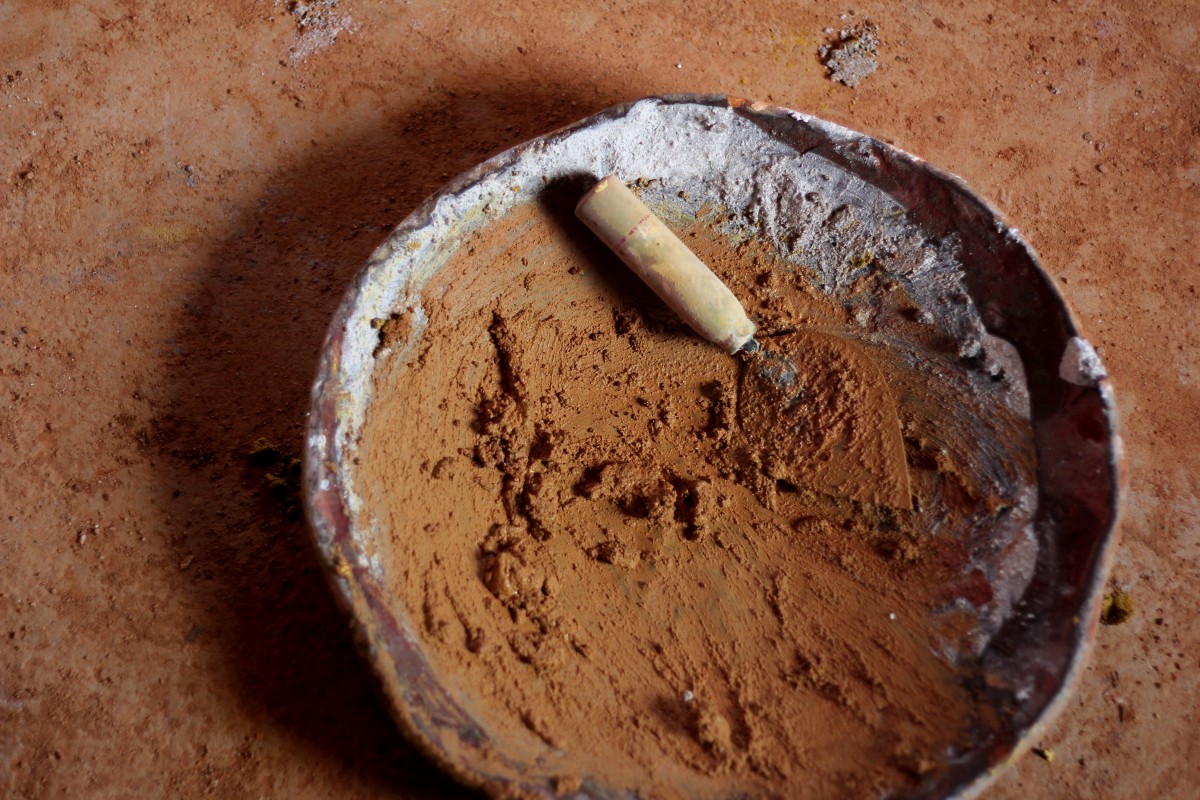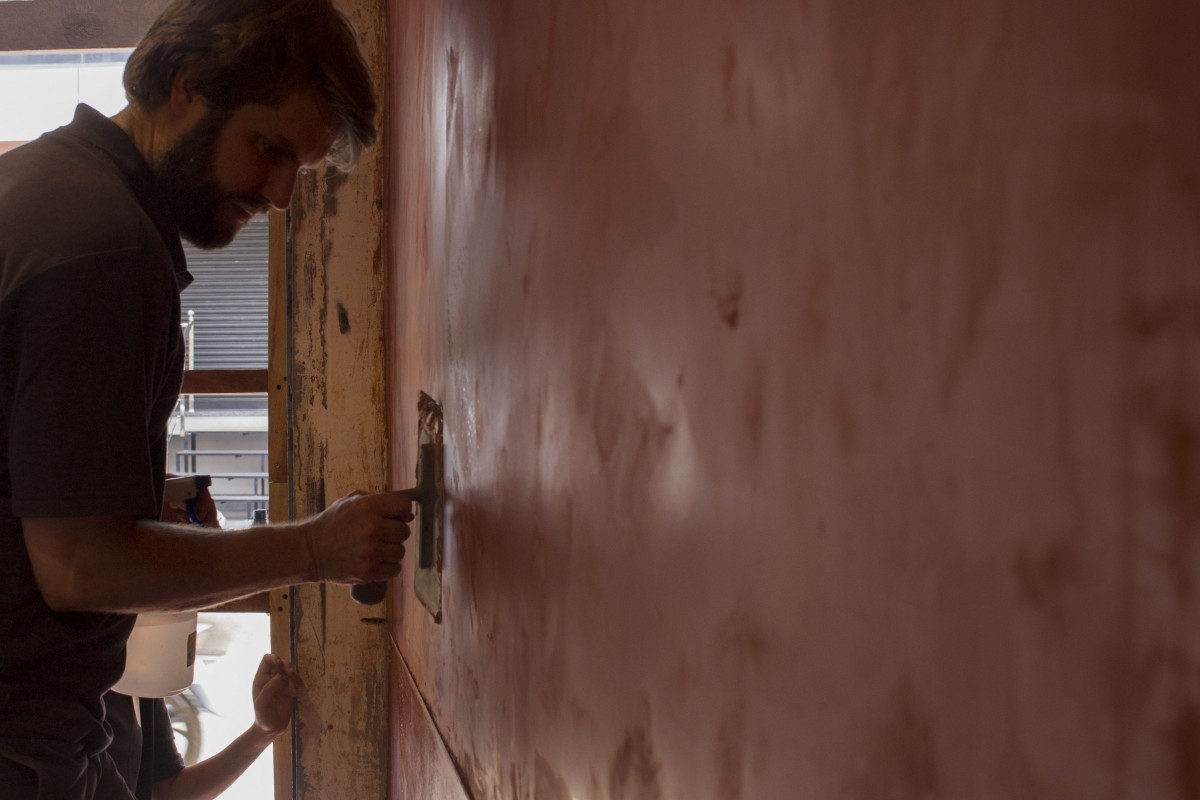It is clay that binds us together
There is something about clay. Yes, I am about to shoot off into an intensely romantic prelude about this material I am so passionate about. Maybe every artisan feels this way about his material, as he uncovers its character, layer after layer while working with it. The first wave of familiarity with clay came in one epiphanic moment for me. Though I had been working with clay plasters for a few years, this mighty 'ah!' moment came somewhere in the midst of a frustrating afternoon on a pottery wheel. If you like a tease, clay is your muse! It seems you simply can't work clay, you work 'with' clay as if it had a mind of its own. It needs hands that are firm and steady, yet gentle enough to shape it. Clay needs just enough water to be workable, a little too much - it collapses, a little too less and it won't listen. Try even for a second to force it in a way it doesn't want to, and you may just have thrown away an hours work. Yet, in due time when you do open up to its intricacies, Clay opens up to you. Such a subtle material I have yet to meet, so versatile and so kind.
From humble pots to rich porcelain, from homes for a new beginning to urns for the end, clay has been a friend of humans for as long as we care to remember. We have needed it to grow our food, to build our shelters, to craft, to sculpt, to lubricate, to make talcum powder, to even understand the moon and piece together the story of our universe!
Clay stands as the central tenet that holds the umbrella of everything we do at Earthly yours. The core science behind clay is what is used not only in natural building practices but also in the building industry at large. The understanding of clay as a binder has been detrimental in the development of cement, lime and is key to the science of building at large.
Clay is the simplest and most ecological of all binders. It is the very binder that gives structure to the soil beneath our feet. It has been the component of soil that has been exploited throughout history in all earth based construction as It can be used in its existing natural state and requires little or no processing. To understand clay better, and we can now with the advent of chemistry and science, we need to look at its molecular organization.
At the molecular level, clay is made of silica and aluminium (among other atoms) that form little platelets. Owing to a unique electron configuration of these molecules, the plates are held together by strong electrostatic forces. These clay particles are extremely hydrophilic. The ions of water can undo the electrostatic bond between these clay platelets and can make them slide off each other and eventually dissolve clay particles. It takes quite a lot of water for this to happen. It will suffice for now to say that until clay gets that much volume of water, it remains thirsty for water. This gives rise to a very important characteristic of clay - It is hygroscopic. It has the ability to wick the air of its moisture. It can absorb and hold moisture from the surrounding air.
The ability of clay to become workable on the addition of water enables us to use it to bind together various minerals and use it to make bricks, plaster and mortar. Many cultures across the world have developed building techniques like Cob, wattle and daub, rammed earth etc to build everything from their humble homes, large mosques, multi-storey buildings to large stretches of Great Wall of China!
In the realm of earth building especially within the world of natural plasters, the hygroscopic nature of clay makes for its humidity regulating properties: It is readily able to capture and release water vapour from the air, based on the relative humidity of its setting. A thin patch of clay plaster in a humid shower might absorb quite a bit of the ambient humidity and will slowly release it through the day when the shower is not used. The same property renders its ability to regulate temperature too. As the water content leaves the clay, it takes with it its embodied heat - The very same phenomena that chills water in an earthen pot. This property combined with good ventilation helps regulate the temperature of spaces. The ability of clay to hold together a host of additives like fibres, husk, hay etc within the body of plasters or other building material can also be used to increase its insulating capacity as well.
The flip side of all these wonderful properties is that clay's high vulnerability to excess water makes it prone to erosion. It is generally less durable compared to other natural plasters that use lime, gypsum etc. While Clay plasters handle the occasional splash of water very well, they cannot handle flowing water. As far as it goes, water is the clay artisans frenemy. One simply cannot work with clay without water, but a little too much is their ruin. This too is not black and white. Clay is also the most forgiving of building materials. Blemishes, mistakes, cracks can be easily reworked. Since there is no chemical change when you wet and apply clay plaster, it can always be wet and re-worked at any point in its life.
In certain parts of Japan, old reworked walls, with marks of repairs and patches, are regarded far more valuable than a new spotless wall. The novelty of a smooth plaster soon gives way to holding within it stories, time, and the antiquity of attachment through generations. They were also the first to intentionally crack plaster with careful techniques of mixing and applying. Clay, given its platelet molecular structure also can be burnished to reflective smoothness. Clay can be used as paint, It can be mixed with straw, it occurs in various shades and can further be enriched with natural pigments. With the material being so versatile, it is an easy step from functionality to art. For many cultures this art is now tradition and culture. And now more than ever, across the world artisans learn from each other, experiment and explore while combing the hundreds of years of experience with contemporary science.
The simplicity and the primitive flexibility and versatility of clay is what makes it a contemporary marvel. Its warmth has touched generations of artisans and users. Its rich personality allows it to transform and revel in any environment. And that, about clay, binds us all.


